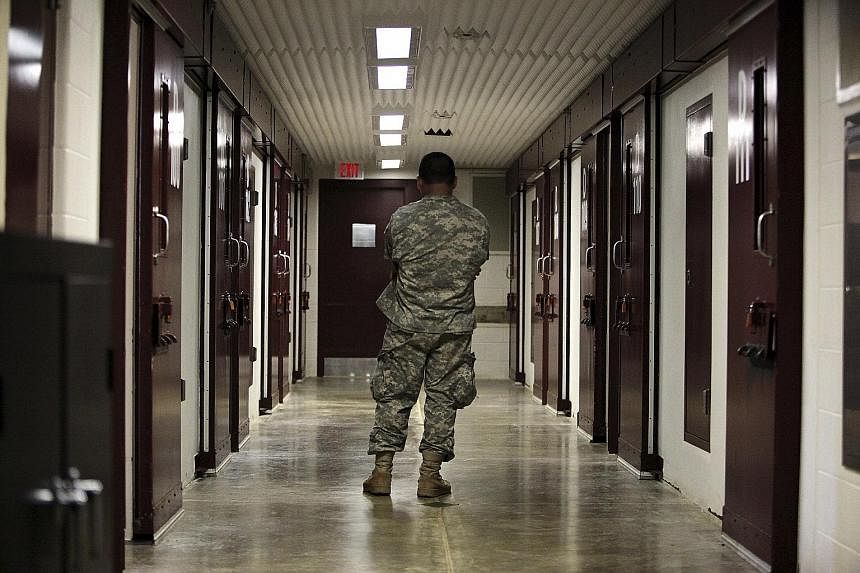WASHINGTON • President Barack Obama yesterday presented a long-awaited road map to close the controversial US military prison at Guantanamo Bay, saying it was time to shutter a facility that betrayed US interests and values.
"It's been clear that the detention centre at Guantanamo Bay does not advance our national security," Mr Obama said in a televised speech from the White House. "It undermines our standing in the world."
"This is about closing a chapter in our history. It reflects the lessons that we've learnt since 9/11 - lessons that need to guide our nation going forward," Mr Obama said, while trying to reassure Americans that suspected terrorists could be safely held in the United States.
Senior administration officials said the plan - which comes in an election year - identifies 13 possible replacement facilities and will set out potential costs involved in the transfer and new incarceration.
Some of the possible locations include existing prison facilities in South Carolina, Kansas and Colorado, as well as six other locations at current military bases, US media reported.
Those locations, however, face objections from local politicians.
A total of 91 suspected militants remain at Guantanamo, a prison that once housed about 700 inmates at its peak and has become synonymous around the world with torture, indefinite detention and orange jumpsuits.
Efforts to transfer prisoners overseas have been stymied by unrest in Yemen - a likely destination for many - and by recidivism among those already released.
Still, Defence Secretary Ashton Carter has in recent weeks signed off on a flurry of transfers and, last month, the prison's population dropped below 100 for the first time.
Mr Obama said the United States will accelerate reviews of remaining detainees to see if they still pose a significant threat.
According to the administration officials, the plan calls for spending of up to US$475 million (S$668 million) to transfer as many as 60 detainees to a yet-to-be-determined facility in the US. The rest of the detainees would be sent to other countries.
Closing the prison at Guantanamo would eventually save the US as much as US$85 million a year, Mr Obama said yesterday.
Mr Obama has pushed for Guantanamo's closure since taking office in 2009, but his efforts have been thwarted by Republican lawmakers, many of whom see it as a useful tool in combating terror. Mr Obama says that the opposite is true, and that the facility feeds into anti-US, Islamist propaganda.
He noted that the closure of the Guantanamo facility once had bipartisan support in the US. "When I first ran for president, it was widely recognised the facility needed to close," Mr Obama said, citing the views of former president George W. Bush and former Republican presidential candidate Senator John McCain.
But supporters of the proposal later backtracked. "Suddenly, many of those who said it needed to close backed off because they were worried about the politics," he said.
Lawmakers largely oppose moving the prisoners to the United States, however, and Mr Obama's final attempt to get congressional backing is unlikely to gain traction.
The US President also has faced opposition from within his own administration, with the Pentagon accused of slow-pedalling transfers and overstating closure costs.
The Guantanamo Bay military prison was opened in January 2002 on a US naval base on a coastal spit of land in south-eastern Cuba, leased from Havana under a treaty dating back to 1903. It was set up after the 9/11 attacks under the administration of president George W. Bush to deal with prisoners who were termed "enemy combatants" and denied many US legal rights.
The Guantanamo prisoners were first detained by US troops in Iraq and Afghanistan. The facility came to symbolise aggressive detention practices in years past that opened the US to allegations of torture.
Perhaps the most notorious prisoner is Khalid Sheikh Mohammed, who along with four co-defendants is charged with plotting the September 11, 2001, attacks.
"Let us go ahead and close this chapter," Mr Obama said. "I don't want to pass this problem on to the next president, whoever it is."
Mr Obama leaves office in January next year.
AGENCE FRANCE-PRESSE, BLOOMBERG, REUTERS

